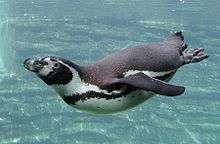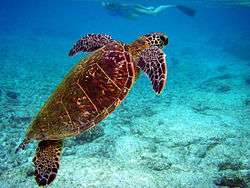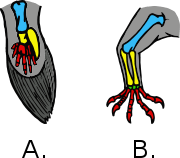Flipper (anatomy)

A flipper is a typically flat forelimb evolved for movement through water. Various creatures have evolved flippers, for example penguins (also called "wings"), cetaceans (e.g. dolphins and whales), pinnipeds, and reptiles such as some varieties of turtle and the now-extinct plesiosaurs, mosasaurs, ichthyosaurs, and metriorhynchids.
Usage of the terms "fin" and "flipper" are often inconsistent, even in the scientific literature. The hydrodynamic control surfaces of a fish are always referred to a "fins" and never as "flippers", and limbs which have evolved into fin-like structures as usually (but not always) called "flippers" rather that fins, but the dorsal structure on cetaceans is called the "dorsal fin" and the large cetacean tail are referred to primarily as flukes but occasionally as "caudal fins".
Some flippers are very efficient hydrofoils, analogous to wings (airfoils), used to propel and maneuver through the water with great speed and maneuverability (see Foil (fluid mechanics)). Some flippers are less foiled, with the appendages still apparent, as in the webbed forefeet seen in amphibious turtles.
See also
References

